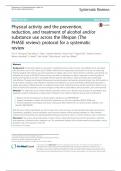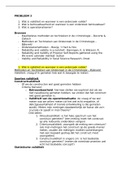Exam (elaborations)
Physical activity and the prevention, reduction, and treatment of alcohol and/or substance use across the lifespan (The PHASE review): protocol for a systematic review
- Course
- Institution
Physical activity and the prevention, reduction, and treatment of alcohol and/or substance use across the lifespan (The PHASE review): protocol for a systematic review Tom P. Thompson1* , Adrian H. Taylor1, Amanda Wanner1, Kerryn Husk1, Yinghui Wei2, Siobhan Creanor1, Rebecca Kandiyal...
[Show more]




